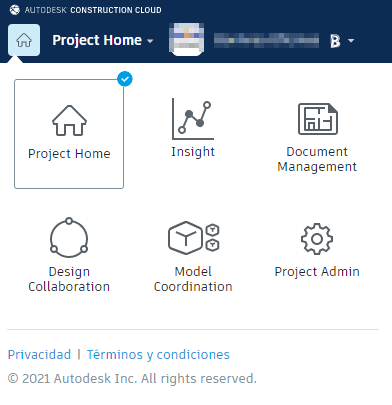ACC: Use and benefit of BIM on-site
1. ACC – Introduction
It’s time to roll up our sleeves and build what we’ve designed. We aim to leverage all the BIM project development and generated information to save money on construction. Let’s remember that the construction site is that small world where everything is needed yesterday, or where incident communication translates into email chains that leave you scrolling endlessly.
At ATBIM, we typically propose the use of ACC to facilitate collaboration among stakeholders. However, like any new process and tool, it requires some level of involvement from users in its adoption and maintenance.

Its multiple applications and benefits are known to all… What we particularly enjoy is using ACC to communicate project changes and issues.
The majority of problems on a construction site arise from communication issues with incidents and changes.
2. Data to the cloud, I mean… to the construction site
Let’s bring the information to the construction site and avoid the use of paper. Let’s manage with BIM.
Firstly, we create the project, where all its information will be stored, and we add the members who will participate in the project, both internal and external to the company.

If someone doesn’t have a ACC account, when added to the project with their email, they will receive an email where they can register and access the project.

The project interface is completely editable, generating folders and subfolders according to the Common Data Environment (CDE) that each project or company needs.

In ACC, files of all extensions can be uploaded, such as .PDF, .JPG, .SAT, .IFC, etc., which facilitates integration into the construction site with project members who may work with various different software, from calculation programs like TEKLA and CYPE to design programs like REVIT and SKETCHUP.
Tip: Let’s always publish models with plans, thus facilitating the incorporation into ACC, allowing technicians to have models and plans in the same place.
3. ACC – Creating a Collaborative Workflow
ACC offers the possibility of creating workflows among project members or between companies in order to minimize or eliminate extensive email threads regarding changes or updates to models.

We establish the approval workflow, with as many steps as necessary and involving the agents we consider should be incorporated and registered on the platform.

We fill out the workflow with the members and agents who should review, make changes to, and/or approve the information requests.

Once the information is completed, we proceed to review the documents or models by accessing the Document Management section, where we have previously generated the Common Data Environment (CDE) and uploaded all project files.
We open the plans, begin reviewing the information, and… WOW! There are unapplied changes in models or the information hasn’t arrived.
4. ACC – Workflow for Incident Management
We proceed to generate the review clouds:
- Access the Review Markups section.
- Create all the markups we need, annotations, arrows, dimensions, etc., to help understand what we want to highlight. IMPORTANT: “We are never editing the native file; all annotations will be reflected in BIM360”.
- Before saving the review markup, we should indicate whether the review cloud should be public (only for project members) or private (we are making review marks but haven’t finished yet and will continue later, so it will only appear to the creator).
- Save review markups.

Once all the necessary review marks are completed on the models and plans, we proceed to send them for review to the agents responsible for them.

First, select the workflow we created previously and give the review a descriptive name.
We can add all the documents that have review marks and that we consider necessary for the agents incorporated into the workflow to receive.

After completing this last step, an instant email notification will be sent to the selected person who will be notified.
Similarly, when these reviews have been addressed and answered, the agent who generated the review will receive the response via email.
5. ACC – Conclusion
We’ve all received CAD drawings with outdated versions, models arriving at the construction site that are not up-to-date, Excel sheets for control that have been forgotten, and endless email chains.
At ATBIM, we believe that establishing a proper flow of communication and collaborative work on-site is crucial because it simplifies procedures and standardizes communication processes, with everything reflected and traced against the project and the various building information models.
Related posts: “BIM in WEB: how to export and visualize website BIM models“.
Lo sentimos, no pudimos encontrar ningún post. Por favor ensaye una búsqueda diferente

